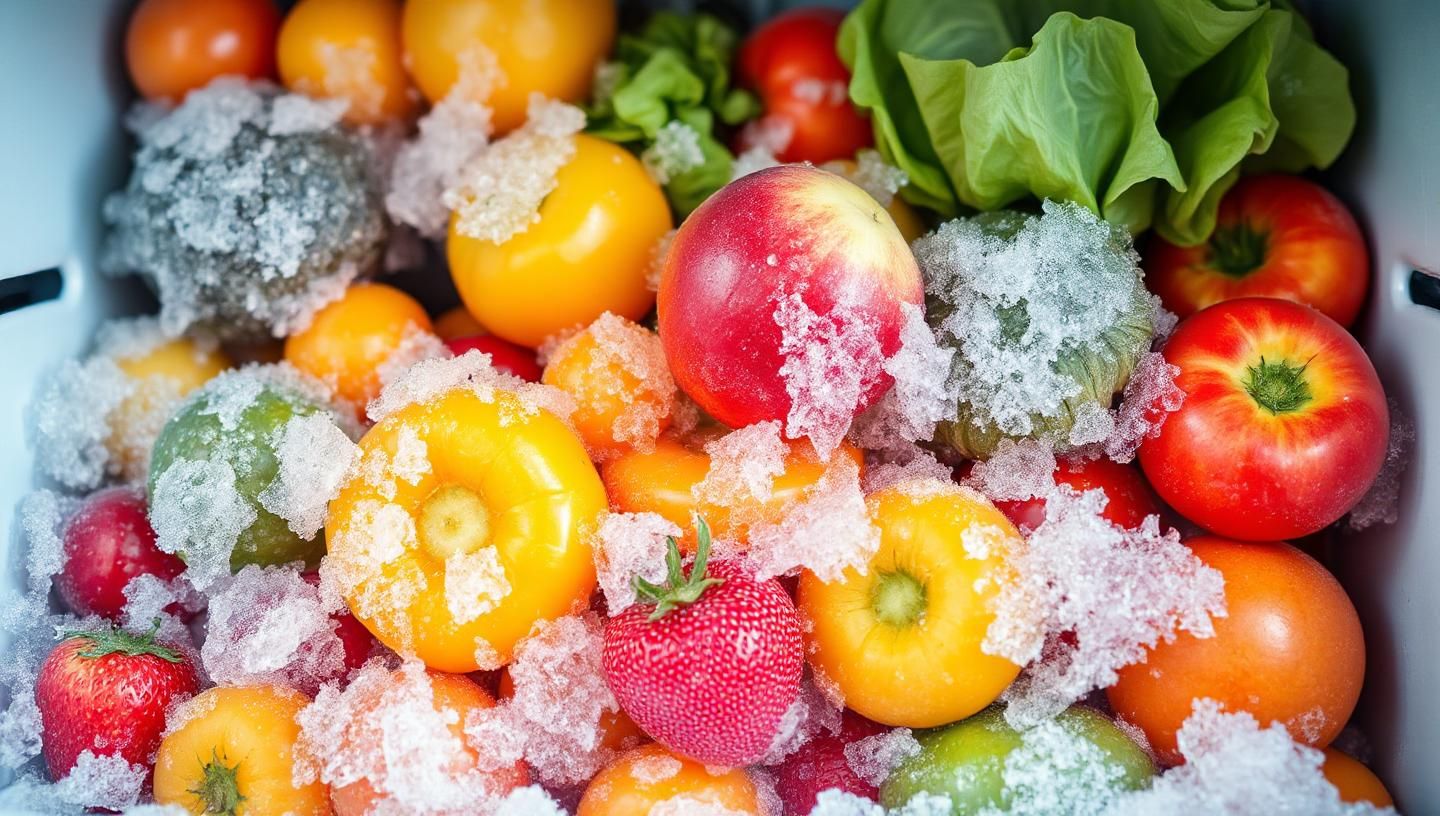Physical Address
304 North Cardinal St.
Dorchester Center, MA 02124
Physical Address
304 North Cardinal St.
Dorchester Center, MA 02124

Freezing Food: Learn the essential techniques and tips for preserving the quality and nutritional value of your food through proper freezing methods.
Basics Of Freezing Food
Hey there! I’ve been obsessed with freezing food for years and learned a ton along the way. Whether it’s to save time, reduce waste, or just to have a stash of meals ready for those busy days, freezing food has become my go-to kitchen hack. In this guide, I’m going to share everything I’ve discovered about the art and science of freezing food, from the best practices to some fun tips and tricks. So, let’s dive in and make your freezer your best friend!
First off, why should we even bother with freezing food? Well, I’ve found that it’s not just about convenience. Freezing food can extend the shelf life of your groceries, which means less food waste and more savings. Plus, it’s a lifesaver for meal prep. Imagine having a week’s worth of meals ready to go, just by pulling something out of your freezer. I’ve tested this approach myself and noticed a significant reduction in my food expenses and time spent cooking.
When it comes to freezing food, safety is paramount. I’ve studied this topic for years and found that proper handling can prevent foodborne illnesses. Always cool hot foods before freezing to avoid raising the freezer’s temperature, which could compromise other foods. Here’s why this works: based on what I’ve learned, bacteria growth slows down significantly at freezing temperatures, but it doesn’t stop entirely. So, ensure your food is at a safe temperature before it goes into the freezer. A practical tip? Use shallow containers to cool food faster. Here’s a mistake to avoid: never refreeze thawed meat unless it’s been cooked first.
Not all foods are created equal when it comes to freezing. From my experience, fruits and vegetables, when properly prepared, freeze wonderfully. I’ve frozen everything from berries to broccoli with great success. For instance, when I first tried freezing bananas for smoothies, I was surprised by how creamy they made the blend. But remember, some foods like lettuce or cucumbers don’t freeze well due to their high water content. Here’s a list of winners: berries, peas, corn, and even cooked pasta. Each has its own little trick to freeze effectively.
The right container can make or break your freezing experience. I’ve explored this deeply, and as a writer passionate about kitchen efficiency, I recommend using airtight containers or freezer bags to prevent freezer burn. Freezer burn not only affects taste but also the texture of your food. I’ve found that glass containers are great for liquids like soups, while plastic bags work well for meats and veggies. Here’s a tip: label everything with the date and contents. Trust me, future you will thank you when you’re rummaging through a frosty freezer.
Freezing cooked foods like pasta, rice, or leftovers is a game-changer. I’ve adapted this from a classic method where I cook in bulk on weekends. For example, freezing cooked pasta is simple: cool it down, toss it with a bit of oil to prevent sticking, and then freeze. When I want to use it, I just boil it briefly to heat through. The same goes for rice; spread it out on a tray to cool before bagging it. This method ensures even freezing and prevents clumping. Remember, the key is cooling before freezing to maintain quality.
Thawing is where many go wrong, but I’ve got you covered. The safest methods are in the refrigerator, in cold water, or in the microwave. I’ve noticed that thawing in the fridge overnight is the best for maintaining texture and safety, especially for meats. For quicker thawing, cold water works, but change the water every 30 minutes. Here’s a warning: never thaw food at room temperature as it can lead to bacterial growth.
Meat is a staple in my freezer. Whether it’s raw chicken, steak, or pork, or cooked dishes like beef chili or chicken soup, freezing meat correctly is crucial. I’ve learned that wrapping meat tightly in freezer wrap or vacuum sealing can prevent freezer burn. For cooked meats, cool them down, portion them, and freeze. When I freeze raw chicken, I often marinate it first, so when it’s time to cook, it’s already flavored. This little trick saves time and adds flavor.
Bread and baked goods freeze surprisingly well. I’ve been baking for years and found that slicing bread before freezing makes it easy to grab just what you need. For cakes or cookies, I wrap them individually or in small batches. When I want a fresh slice of bread or a cookie, I just pop it in the toaster or oven. This method keeps them tasting fresh, and it’s a great way to enjoy homemade treats anytime.
So there you have it, my comprehensive guide on the basics of freezing food. I’ve shared what works for me—hope it helps you too. Freezing food isn’t just about preservation; it’s about smart living, reducing waste, and making life a bit easier. Remember, I’ve been through the trial and error, and these tips are what I’ve found to be the most effective. Whether you’re freezing fruits, meats, or meals, the key is in the preparation and storage. Happy freezing, and may your freezer always be stocked with delicious, ready-to-go meals!